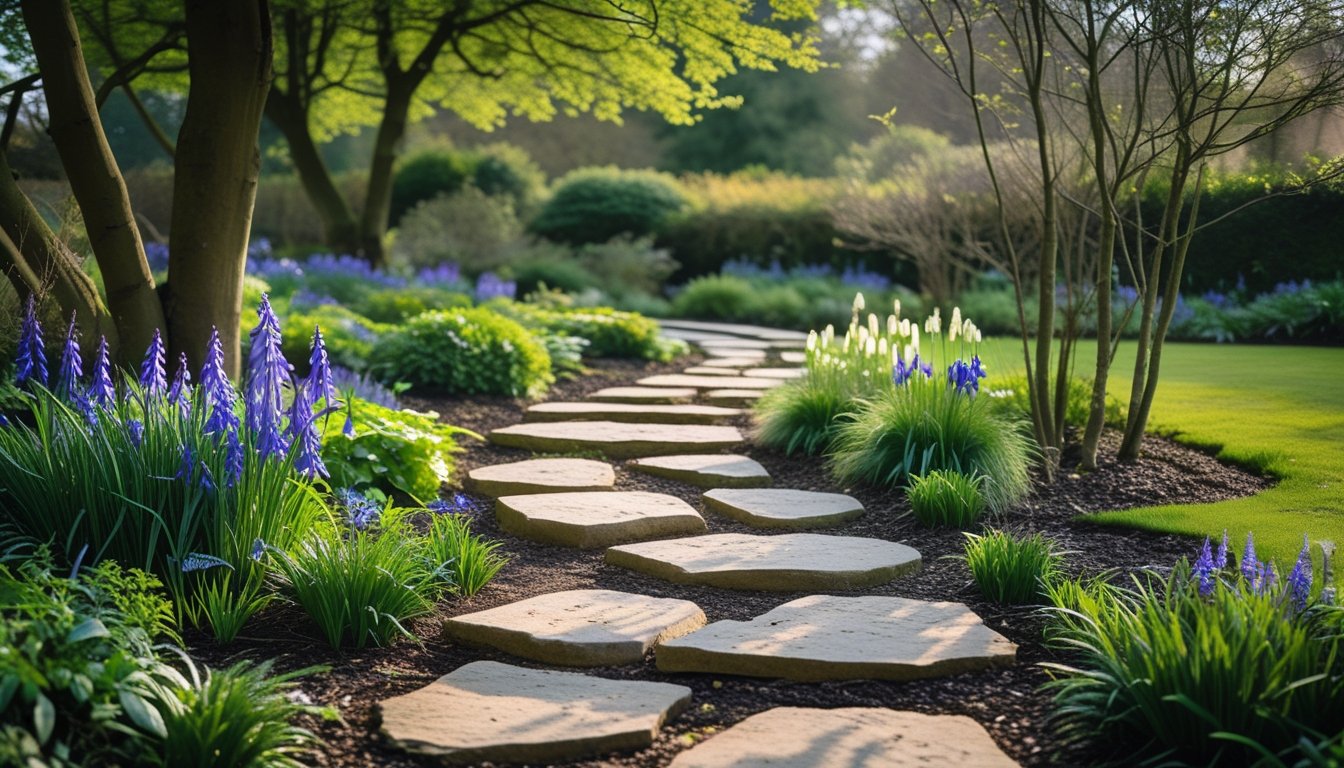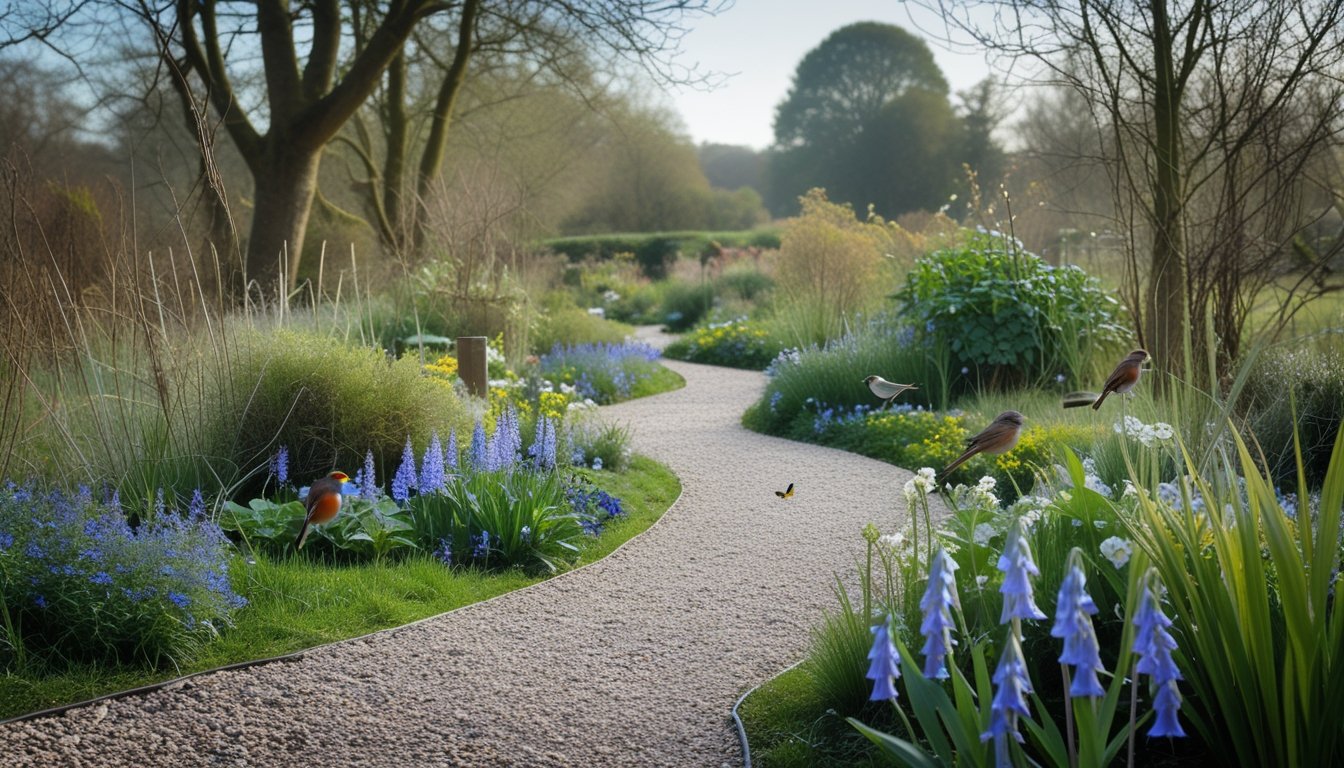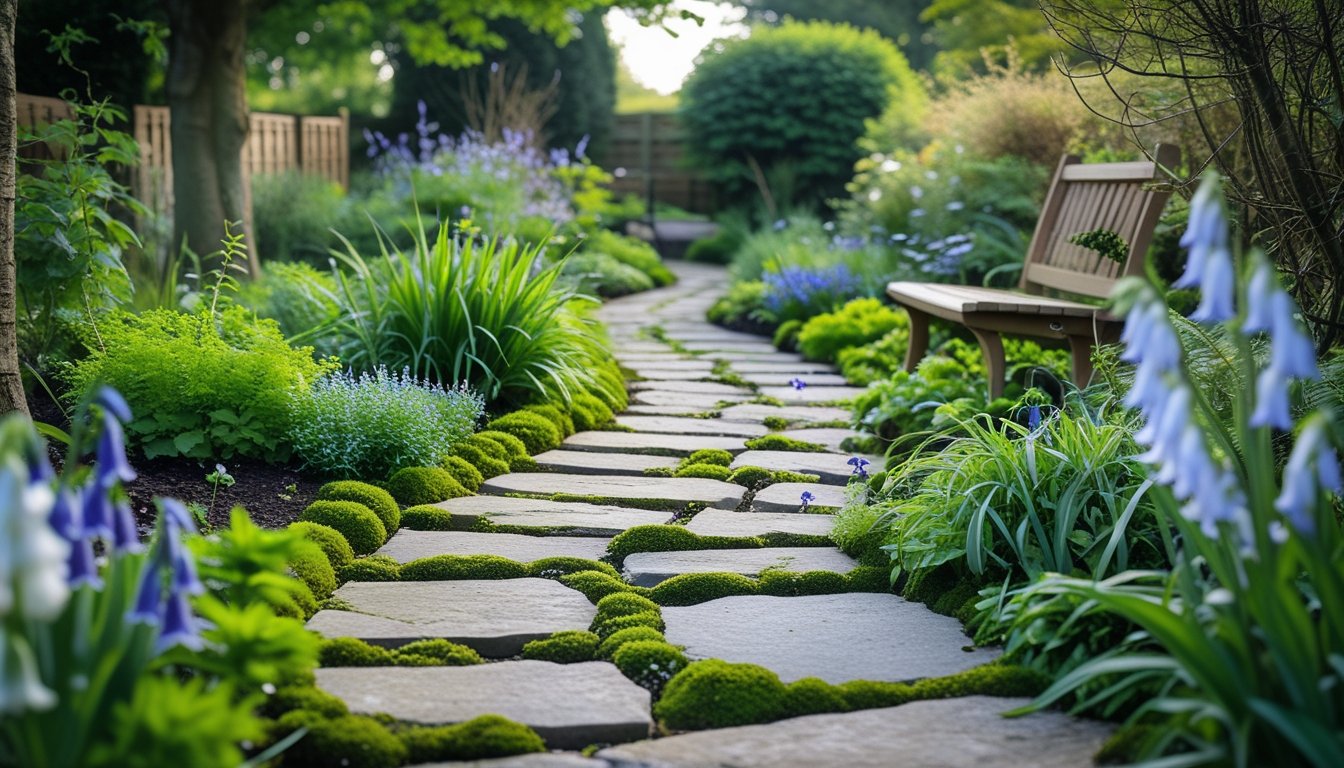Late updated: 14 Jul 2025 18:07
Written by: Emily Thornton
Creating A Native UK Garden Pathway: A Guide to Natural Landscaping
Creating a native UK garden pathway offers a wonderful opportunity to connect with nature while enhancing the beauty of our outdoor space. A well-designed path made from natural materials, like bark or reclaimed wood, can lead visitors through lush plantings of native flora. Choosing local plants not only supports wildlife but also ensures the garden thrives with minimal maintenance.

There are countless choices when it comes to materials for crafting the perfect path. Options range from simple gravel that blends seamlessly into a garden landscape to more rustic, woodland bark for a naturalistic feel. We can lay out these pathways to encourage a harmonious flow, inviting exploration and enhancing the overall garden design.
In addition to aesthetic pleasure, native garden pathways significantly benefit local ecosystems. They foster habitats for pollinators and create microclimates that support a diverse range of species. By integrating these elements into our garden design, we celebrate local biodiversity while enjoying a sustainable and inviting outdoor space.
Key Takeaways
- Native garden pathways enhance aesthetic and ecological value.
- Local plants and materials support minimal maintenance and biodiversity.
- Different materials offer unique design and environmental benefits.
Designing a Native UK Garden Pathway
Creating a native UK garden pathway involves combining ecological benefits with aesthetic appeal. This section explores how integrating native plants, selecting natural materials, and considering layout can make pathways functional and attractive.
Integrating Native Plants for Biodiversity
Incorporating native plants into our garden pathways supports biodiversity and attracts local wildlife. By choosing UK-native perennials, we ensure a garden that thrives with minimal intervention and fosters a habitat for pollinators like bees and butterflies.
Using native plant species not only benefits ecological health but also adds year-round interest with varying colours and textures. Consider options like hedgerows lined with wildflowers, which can serve as effective, beautiful borders. This approach integrates plant choices that complement the surrounding landscape, emphasising a natural, cohesive design.
Selecting Natural Materials and Finishes
Choosing the right materials is essential for a sustainable garden path. Opt for natural materials such as gravel, reclaimed bricks, or decomposed granite. These materials blend seamlessly with the environment and ensure a low-maintenance surface.
Utilising recycled materials contributes to an eco-friendly garden, promoting sustainability. Consider incorporating brick edging for definition, lending a classic cottage garden look. The texture and colour of these materials provide both visual appeal and longevity, which are crucial for a pathway intended to withstand various weather conditions.
Pathway Layouts and Shape Considerations
The layout and shape of our garden path should reflect the natural contours of the landscape. Meandering pathways not only enhance visual interest but also lead visitors on a leisurely journey through the garden. This style of layout aligns with the informal, organic feel often associated with traditional UK gardens.
When planning the shape, ensure that it integrates seamlessly with the garden's overall landscape design. Use strategic curves and varying widths to define different garden areas. This allows for practical navigation and creates distinct sections that can be used to showcase specific plants or features along the pathway.
Installation and Planting for Wildlife and Interest

Creating an inviting garden pathway involves thoughtful consideration of both design and ecological aspects. By incorporating materials like stepping stones and gravel, along with the right plants and features, we can enhance biodiversity while maintaining visual appeal.
Constructing Pathways with Stepping Stones and Gravel
A stepping stone pathway offers a practical and affordable route through the garden. Stepping stones, which can be made of various materials like stone or concrete, are ideal for a DIY approach. Laying them in a staggered pattern creates a natural flow, providing stability and safety.
Utilising gravel, especially white gravel, partners well with stepping stones. Gravel pathways are straightforward to install and require minimal maintenance. In Norfolk and other similar climates, they aid drainage while adding visual texture. It's important to compact the base properly to prevent the stones from shifting.
Choosing and Placing Wildlife-Friendly Flora
Selecting the right plants enriches both the pathway and the wildlife ecosystem. Native plants like foxgloves, hollyhocks, and ferns provide food and shelter for a variety of species. Lavender and salvia are excellent for attracting pollinators, while ornamental grasses can add texture and movement.
Planting in clusters along the path edges will help to define the route and prevent invasive species from taking hold. We should consider including ground cover like peonies and delphiniums to fill gaps, adding both colour and biodiversity. Proper placement ensures that different plant heights and blooms create year-round interest and support for wildlife.
Enhancing Outdoor Space with Water and Vertical Features
Incorporating water features such as ponds or small fountains can significantly boost the ecological value of our garden. They provide essential water sources for birds, insects, and small mammals. Even a small, well-placed water feature adds serenity and attracts wildlife.
For vertical interest, consider species like silver birch or boxwood, which provide structure and habitat for various creatures. Climbing plants or vertical planters along walls create intricate layers, encouraging climbing insects and birds. This diversity of features and heights makes the garden not only visually dynamic but also a thriving ecological habitat.
Frequently Asked Questions

Creating a native UK garden pathway involves thoughtful material selection and design tailored to specific garden styles. By considering both practicality and style, one can create pathways that enhance the overall garden experience.
What are the best materials to use for a durable and low-maintenance garden pathway?
When aiming for durability and low maintenance, it's best to consider natural materials like gravel or stone. These provide a rustic look and blend well with native plants. Brick and permeable pavers are also excellent choices, as they can maintain stability over time and allow for proper drainage.
How can one design a garden path that is both affordable and aesthetically pleasing?
To achieve an affordable and visually appealing path, we suggest combining simple design elements like straight lines or gentle curves with cost-effective materials such as gravel or bark mulch. Incorporating native plants along the edges can soften the appearance and enhance the pathway's charm.
What considerations should be taken into account for creating a pathway in a woodland garden?
In a woodland setting, selecting materials that complement the natural environment is crucial. Opt for materials like wood chips or bark, which blend seamlessly with the surroundings. Consider the impact on tree roots, and design the path to follow natural contours to minimise disruption.
What are some modern design options for garden paths suitable for a UK native garden?
Contemporary designs often experiment with texture and geometry. We can use large format stones, mixed with gravel, to create clean lines and contrasting appearances. Incorporating lighting can add a modern touch, while still maintaining a focus on native elements in the garden.
How should a garden pathway be laid out to complement a native woodland garden's layout?
When planning a path in a native woodland garden, preserving natural features is key. Curved paths that follow the terrain can lead visitors gently through the space. Avoid straight lines, and instead, allow the path to meander, inviting discovery and enhancing the forest feel.
Can you suggest ways to construct a garden path that requires minimal upkeep?
For minimal maintenance, we should choose durable materials that resist weathering, such as natural stones or concrete pavers. Choosing a permeable option can reduce weed growth and prevent water accumulation. Regular edging and a weed barrier underneath can further help reduce maintenance efforts.
